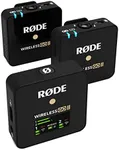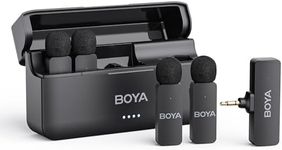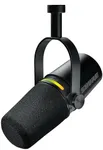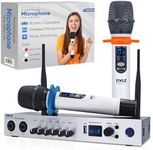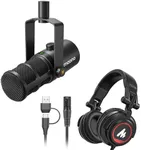Buying Guide for the Best Camera Microphones
Choosing the right camera microphone can significantly enhance the audio quality of your videos, making them more professional and engaging. When selecting a camera microphone, it's important to consider various specifications that will impact the sound quality, usability, and compatibility with your camera. Understanding these key specs will help you make an informed decision and find the best fit for your needs.Type of MicrophoneThe type of microphone is crucial because it determines how the microphone captures sound. There are several types, including shotgun, lavalier, and handheld microphones. Shotgun microphones are highly directional and great for isolating sound from a specific source, making them ideal for interviews or vlogging. Lavalier microphones are small and clip onto clothing, perfect for hands-free operation and capturing dialogue in a discreet manner. Handheld microphones are versatile and often used for interviews or live events. Choose the type based on your recording environment and the kind of audio you need to capture.
Polar PatternThe polar pattern of a microphone describes how it picks up sound from different directions. Common polar patterns include cardioid, omnidirectional, and bidirectional. Cardioid microphones capture sound primarily from the front, reducing background noise, which is ideal for noisy environments. Omnidirectional microphones pick up sound equally from all directions, making them suitable for capturing ambient sounds or group discussions. Bidirectional microphones capture sound from the front and back, useful for interviews with two people. Consider your recording setup and choose a polar pattern that best suits your needs.
Frequency ResponseFrequency response refers to the range of frequencies a microphone can capture. A wider frequency response means the microphone can pick up a broader range of sounds, from low bass to high treble. For general use, a frequency response of 20 Hz to 20 kHz is sufficient, as it covers the full range of human hearing. If you need to capture specific sounds, such as musical instruments or high-pitched voices, look for a microphone with a tailored frequency response that emphasizes those frequencies. Match the frequency response to the type of audio you plan to record.
SensitivitySensitivity indicates how well a microphone can pick up quiet sounds. It is measured in decibels (dB) and a higher sensitivity means the microphone can capture softer sounds more effectively. If you are recording in a quiet environment or need to capture subtle audio details, a microphone with higher sensitivity is beneficial. However, in loud environments, a lower sensitivity microphone might be preferable to avoid picking up too much background noise. Consider the typical volume levels of your recording environment when choosing the sensitivity.
ConnectivityConnectivity refers to how the microphone connects to your camera or recording device. Common options include 3.5mm jacks, XLR connectors, and USB connections. 3.5mm jacks are widely compatible with most consumer cameras and are easy to use. XLR connectors are typically found on professional-grade equipment and offer better sound quality and durability. USB microphones are convenient for direct connection to computers and are often used for podcasting or streaming. Ensure the microphone you choose is compatible with your camera or recording setup.
Power SourceMicrophones can be powered in different ways, including battery-powered, phantom power, or plug-in power. Battery-powered microphones are portable and convenient for on-the-go recording. Phantom power is supplied through XLR connections and is common in professional audio equipment, providing consistent power without the need for batteries. Plug-in power is provided by the camera or recording device through the 3.5mm jack. Consider your recording setup and choose a power source that is convenient and reliable for your needs.
Size and WeightThe size and weight of a microphone can affect its portability and ease of use. Smaller, lightweight microphones are easier to carry and handle, making them ideal for mobile recording or vlogging. Larger microphones may offer better sound quality but can be cumbersome to transport and set up. Consider how often you will be moving your recording setup and choose a microphone that balances sound quality with portability.



